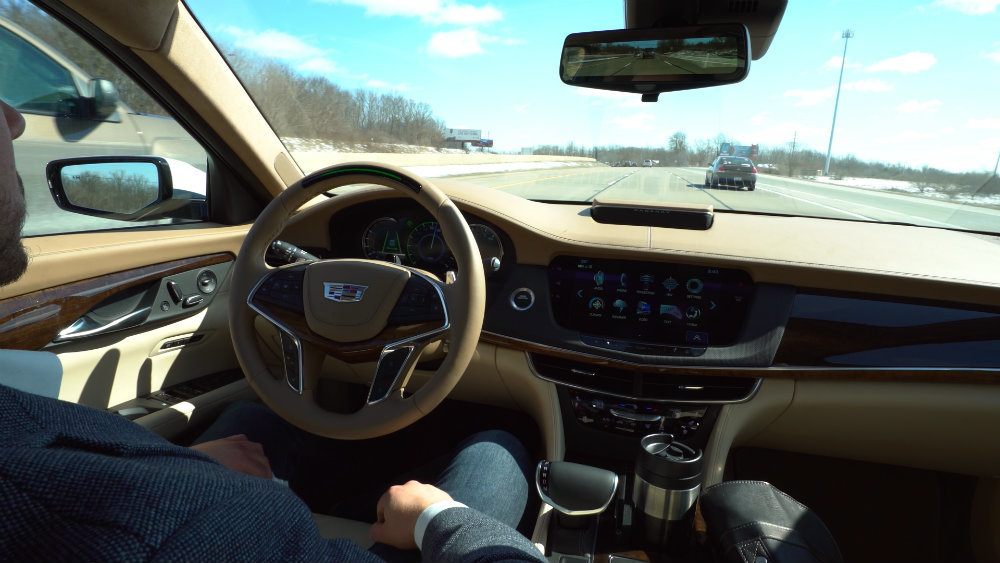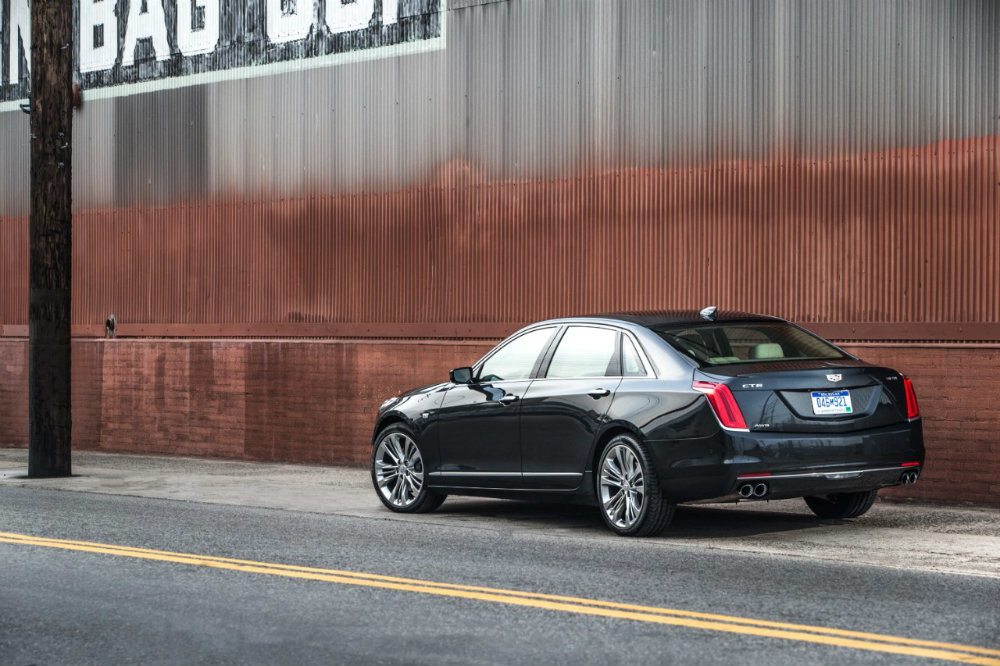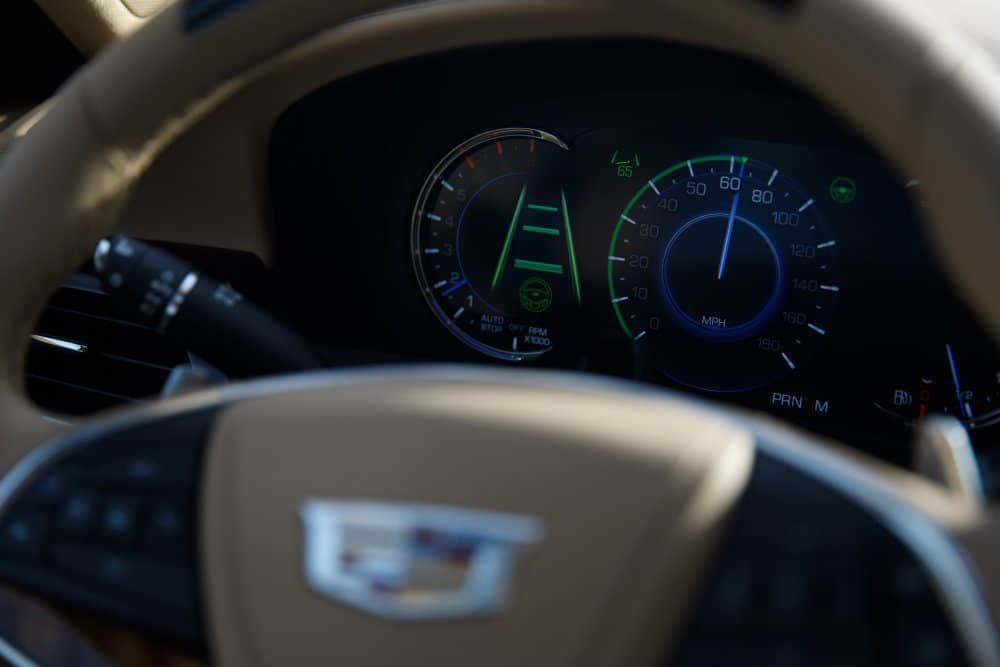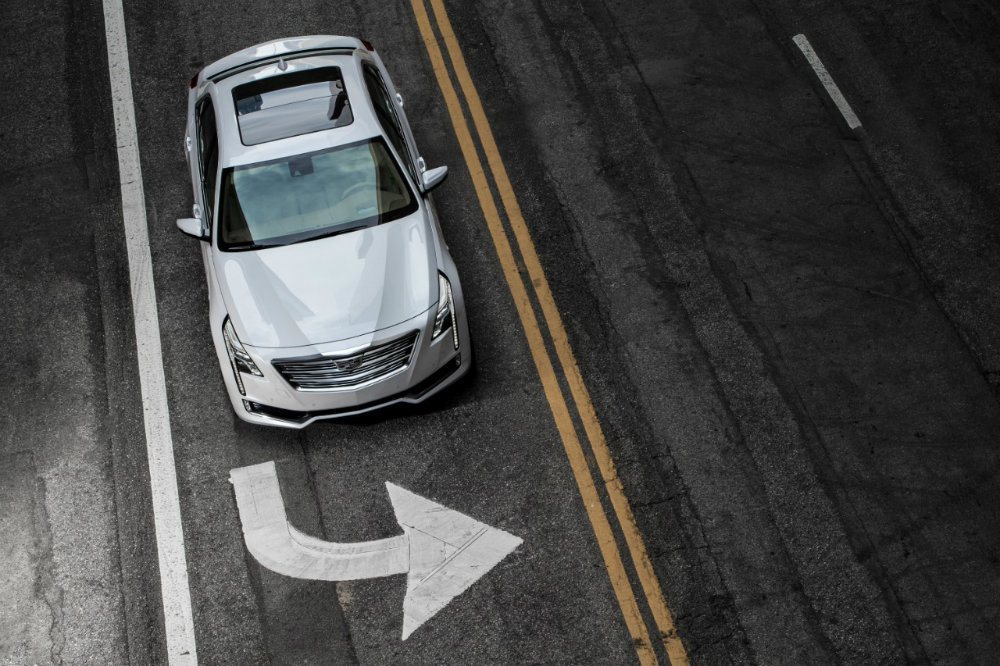The short story here is that Cadillac has a new “smart” cruise control system called Super Cruise. The long story is that, although that’s a pretty cool name, it’s actually the name of something aerospace engineers have been chasing for a long while now.
In the aerospace world, super cruise (in the aero parlance) is a specific set of engine performance standards that, in short, allow a plane to fly at supersonic speeds without engaging the afterburners.
This is, unsurprisingly, a very tough thing to do, and despite some very bright people working at Rolls Royce and Pratt & Whitney and Tumansky, they (and by “they” I mean Pratt & Whitney working on the F-22 program) only got it figured out around a decade ago. Cadillac’s Super Cruise (two words) is, sadly, not a thing that will help your huge American luxo-barge cruise down the interstate at roughly 700 miles an hour. Give or take.
Precise Network
Super Cruise is Cadillac’s hands-free driving technology for the highway. Caddy says that Super Cruise, unlike other driver assistance systems, will utilize two different approaches: A driver attention system and precision LiDAR map data. Super Cruise will first roll out in the 2018 Cadillac CT6 this fall. Obviously this is in response to the growing inevitability of both self driving cars, and the fact that Tesla, a direct competitor to Cadillac in many ways, has a near-self driving car of their own already on the market.
The Super Cruise system is added on to the network of cameras and radar sensors already in place on the CT6. The system aims to bring comfort and convenience for both long distance drives as well as daily commutes. It also adds automatic lane-centering to the CT6’s set of driver assistance/active safety gizmos to enable automatic control of both speed and steering during highway driving.
The most forward facing half of the Super Cruise scheme is the Driver Attention System. This portion of the system uses an inconspicuous infrared camera located on the top of the steering column, focused on the driver to monitor head position and track where the driver is looking while using Super Cruise. Cadillac points out how they are the only manufacturer to monitor driver attention to the road while their smart cruise control system is employed.

Ready & Alert
For example, the Driver Attention System senses if the driver has turned away from the road ahead for too long. If so, it will “prompt” the driver to pay attention. Curiously, if those first prompts do not get you to immediately refocus on the road, the Super Cruise system will continue to do the “safely steer” thing until a further escalation of alerts prompts you to resume supervision of the car.
Sadly, this is not a collection of ah-oogah horns and warning claxons sourced from WW II destroyers, which personally I would find kind of fun. No, in the case of Caddy’s Super Cruise, a steering wheel light bar guides the driver to look at the road or take back control of the wheel. Escalating levels of alerts include visual indicators in the instrument cluster, tactile alerts in Cadillac’s Safety Alert Seat, and audible alerts, if necessary. Sadly, the “tactile alerts in Cadillac’s Safety Alert Seat” do not involve direct application of high voltage shocks to your tuchus.
Oh, and here’s a fun little bit from Caddy: “In the limited event of an unresponsive driver, the Cadillac CT6 utilizes the full capability of onboard driver assistance technologies to bring the car to a controlled stop and contact OnStar to alert first responders, if necessary.” Okay, first, thank you, second, I hope it never comes to that, and third, how fun would it be to get out on a lonely road late at night and “test” this portion of the system?

Cameras & Sensors
The other half of the Super Cruise system, the LiDAR map data, is pretty technically sweet.
LiDAR stands for Light Detection and Ranging, and is a remote sensing method that uses light in the form of a pulsed laser to measure ranges (i.e. variable distances) to anything that it’s aimed at. In the case of Caddy’s Super Cruise, that means anything in front of the car, but in the case of the American military (which is where LiDAR comes from, natch) it means anything that is down range from that missile/gun/attack helicopter/etc. that is about to get blown to Mars.
Cadillac says this is the first assisted driving technology that will use precision LiDAR map data and real-time cameras, sensors, and GPS. Basically it works like this: Data from on-board cameras, GPS, and radar sensors is used to govern steering, braking, and acceleration. On top of that, the Super Cruise system inserts more information using a LiDAR-scanned map database.

Pinpoint Accuracy
All of this combined enables it to function, but only in areas where appropriate road conditions are detected. In other words, the system is “smart” enough to know that even if the map says the road is clear and four lanes wide, it will default to what its sensor suite definitively says is out there.
So no more of this “GPS says take a left and drive over the bridge” only the bridge ain’t there no more and splash-gurgle-gurgle-gurgle you drown.
Cadillac went so far as to make their own precision LiDAR maps for every mile of limited-access highway in the United States and Canada. This, combined with improved GPS accuracy, means the system is four to eight times more precise than traditional GPS alone. Super Cruise will allow hands-free driving – it is not fully autonomous, but Cadillac feels it’s the next best thing.
Tony Borroz has spent his entire life racing antique and sports cars. He is the author of Bricks & Bones: The Endearing Legacy and Nitty-Gritty Phenomenon of The Indy 500, available in paperback or Kindle format. Follow his work on Twitter: @TonyBorroz.
Photos & Source: Cadillac


